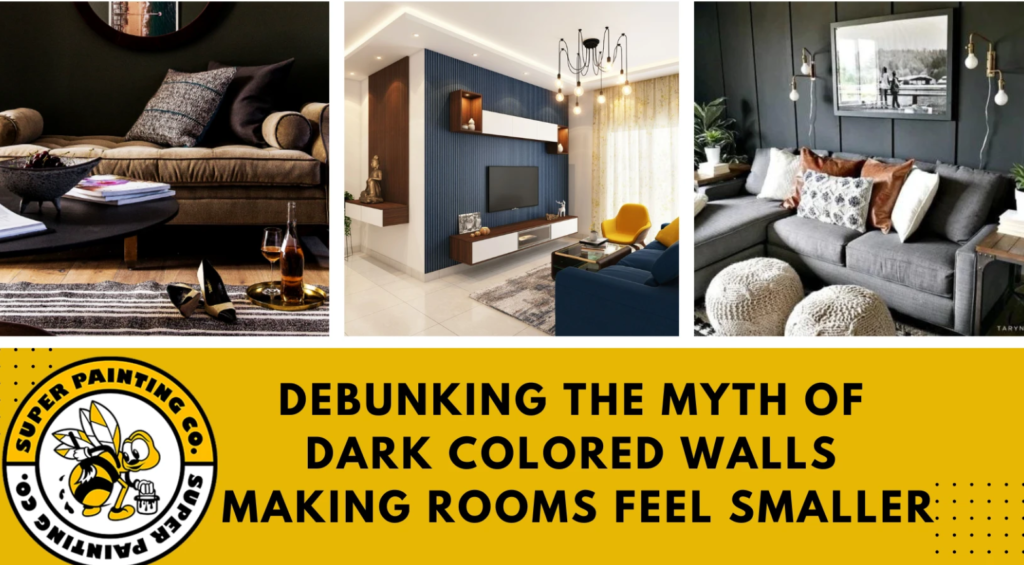Debunking the Myth of Dark Colored Walls Making Rooms Feel Smaller.
The choice of wall color plays a pivotal role in interior design, setting the tone for a room and influencing the overall ambiance. Among the myriad of options, dark colors often carry a reputation for making spaces feel smaller and more confined. However, this belief is not entirely accurate. While it is true that color can impact the perception of space, the relationship between dark-colored walls and room size is more nuanced than it seems.
Creating Space with Darkness: The Surprising Effects of Dark-Colored Walls on Room Dimensions
The Psychology of Color Perception
Before delving into the impact of dark-colored walls on room size, it’s crucial to understand the psychology of color perception. Colors have the power to evoke emotions, create moods, and influence the way we perceive space. Lighter colors tend to reflect more light, creating an illusion of openness and airiness, while darker colors absorb light and can impart a sense of coziness and intimacy.
The Contrasting Effects of Dark Colors
Dark colored walls, contrary to the belief that they invariably shrink a room, can actually have varying effects depending on how they are employed. When used strategically, dark colors can create a stunning visual depth that tricks the eye into perceiving a larger space. For instance, painting one accent wall in a dark shade can add dimension to a room, creating a focal point that draws the gaze and distracts from the walls’ dimensions. Visit Our Website for More Information.
Furthermore, dark colors can blur the lines of a room, softening edges and corners that might otherwise make the space feel cramped. This technique can be particularly effective in elongated rooms, where the depth is highlighted by the darker hue at one end, giving the illusion of a more balanced layout.

Light and Reflection
Lighting plays a pivotal role in determining how dark walls influence the perception of space. Ample natural and artificial light can mitigate the potential ‘shrinking’ effect of dark colors. Well-placed lighting fixtures that cast light across the room can prevent the walls from closing in, ensuring that the space maintains an open and inviting ambiance.
Contrasting Elements
The choice of furnishings, decor, and textiles can significantly impact the perceived size of a room with dark-colored walls. Opting for light-colored furniture and decor items can create a striking contrast that offsets the darkness of the walls. This interplay between light and dark elements contributes to a balanced aesthetic and prevents the space from feeling overly confined.
Visual Tricks and Optical Illusions
Interior designers often employ various visual tricks to manipulate the perception illusion of space. Mirrors, for instance, can work wonders in making a room appear larger by reflecting light and creating the illusion of depth. Placing mirrors strategically on walls with dark colors can amplify their positive effects, enhancing the sense of space and preventing any feelings of confinement.
Bottom Line
The belief that dark-colored walls inevitably make a room feel smaller is a generalization of a complex relationship between color, perception, and design. While it’s true that dark colors absorb light and can create a sense of coziness, their impact on room size can be mitigated by employing smart design strategies. When used thoughtfully and in conjunction with effective lighting, contrasting elements, and optical illusions, dark-colored walls can enhance the visual depth and character of a space, debunking the myth of their shrinking effect.
Ultimately, the key lies in understanding how to harness the power of color to create a harmonious and welcoming interior that defies preconceived notions about space and design.
Get free color consultation and estimates from Super Painting Contractor in California. See More…





